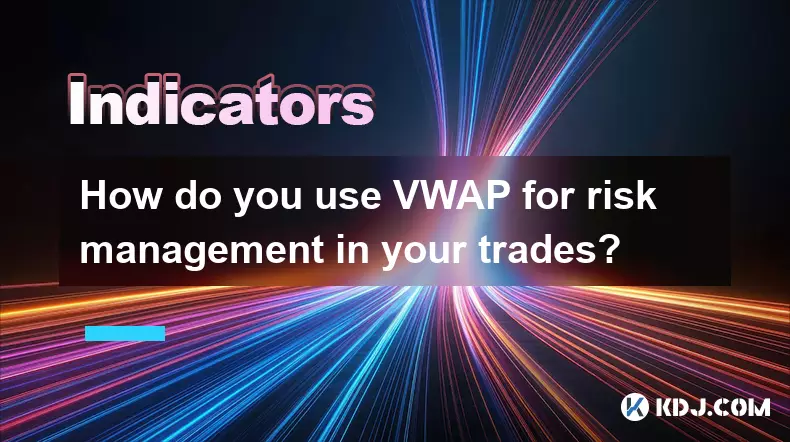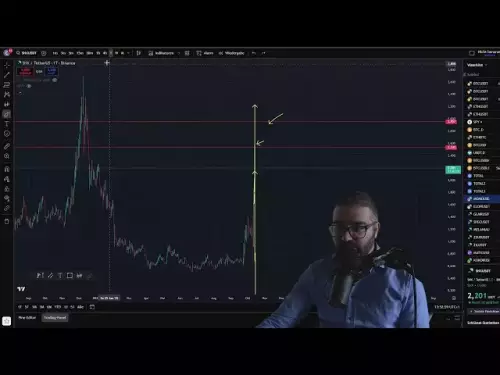-
 bitcoin
bitcoin $115692.075601 USD
5.13% -
 ethereum
ethereum $4162.931611 USD
11.68% -
 bnb
bnb $1310.063287 USD
17.56% -
 tether
tether $1.000983 USD
0.00% -
 xrp
xrp $2.534505 USD
8.16% -
 solana
solana $198.235737 USD
13.49% -
 usd-coin
usd-coin $1.000236 USD
0.02% -
 dogecoin
dogecoin $0.207352 USD
12.89% -
 tron
tron $0.323043 USD
3.62% -
 cardano
cardano $0.701559 USD
11.88% -
 hyperliquid
hyperliquid $39.924597 USD
8.30% -
 chainlink
chainlink $18.934457 USD
11.56% -
 ethena-usde
ethena-usde $1.000552 USD
0.02% -
 stellar
stellar $0.340575 USD
7.05% -
 bitcoin-cash
bitcoin-cash $545.011757 USD
8.86%
What is the formula behind the KDJ indicator calculation?
The KDJ indicator enhances crypto trading by identifying overbought/oversold levels and potential reversals through its %K, %D, and sensitive %J lines.
Oct 13, 2025 at 01:36 am

KDJ Indicator Overview and Its Role in Crypto Trading
The KDJ indicator, often referred to as the stochastic oscillator with a momentum factor, is widely used in cryptocurrency trading to identify overbought or oversold conditions. It expands upon the traditional %K and %D lines by introducing a third line known as %J. This addition allows traders to gain deeper insight into price momentum and potential reversal points within volatile digital asset markets.
- The foundation of the KDJ lies in comparing a cryptocurrency’s closing price to its price range over a specific period.
- Traders typically use a 9-period setting, though adjustments are common depending on market volatility.
- Unlike simple moving average-based tools, the KDJ reacts swiftly to abrupt price changes, making it suitable for fast-moving crypto assets.
- The inclusion of the %J line amplifies sensitivity, helping detect early signs of trend exhaustion.
- Because digital currencies often experience sharp rallies and corrections, the KDJ can signal possible entry or exit zones before broader market confirmation.
Mathematical Components Behind the KDJ Calculation
Understanding the formulaic structure of the KDJ requires breaking down its three core components: %K, %D, and %J. Each plays a distinct role in forming the complete indicator.
- %K = [(Current Close - Lowest Low) / (Highest High - Lowest Low)] × 100 forms the base value, where “Lowest Low” and “Highest High” are observed over a defined lookback period, usually nine candles.
- A smoothed version of %K, called %D, is calculated as a moving average—typically a 3-period simple moving average—of the %K values.
- The %J line is derived using the formula: %J = 3 × %K - 2 × %D, which magnifies deviations from the mean and highlights extreme levels.
- These calculations are repeated for each new candlestick, allowing real-time updates across various timeframes.
- In practice, exchanges and charting platforms automate these computations, but knowing the underlying math helps traders interpret signals more accurately.
Application of KDJ in Identifying Market Extremes
In the context of cryptocurrency trading, the KDJ serves as a timing tool for spotting potential reversals when prices reach unsustainable levels.
- When the %K line crosses above the %D line in the oversold region (typically below 20), it may suggest a bullish reversal is imminent.
- Conversely, bearish signals arise when %K crosses below %D in the overbought zone (usually above 80).
- The %J line often spikes beyond 100 or drops below 0, indicating exaggerated momentum that could precede a pullback.
- During strong trends, the KDJ can remain in overbought or oversold territory for extended periods, so it should not be used in isolation.
- Combining KDJ readings with volume analysis or support/resistance levels increases the reliability of generated signals.
Frequently Asked Questions
How does the KDJ differ from the standard Stochastic Oscillator? The primary distinction is the inclusion of the %J line, which adds an extra layer of momentum analysis. While the standard stochastic only displays %K and %D, the KDJ emphasizes divergence through the amplified %J, offering earlier warnings of potential trend shifts in crypto prices.
Can the KDJ be applied effectively on intraday crypto charts? Yes, especially on 15-minute, 1-hour, or 4-hour intervals where short-term momentum plays a significant role. Due to high volatility in assets like Bitcoin or Ethereum, the KDJ can help pinpoint rapid turnarounds, though frequent false signals may occur during sideways consolidation phases.
What settings are optimal for KDJ in cryptocurrency trading? A common configuration uses a 9-period lookback for %K, a 3-period moving average for %D, and the default multiplier for %J. However, traders may adjust these based on strategy duration—shorter periods increase sensitivity, while longer ones reduce noise at the cost of delayed signals.
Why does the %J line sometimes show values above 100 or below 0? This occurs due to its calculation formula, which triples the %K value and subtracts twice the %D. Extreme price movements in cryptocurrencies can push %K sharply upward or downward, causing %J to exceed normal bounds. These extremes often highlight intense speculative pressure or capitulation events.
Disclaimer:info@kdj.com
The information provided is not trading advice. kdj.com does not assume any responsibility for any investments made based on the information provided in this article. Cryptocurrencies are highly volatile and it is highly recommended that you invest with caution after thorough research!
If you believe that the content used on this website infringes your copyright, please contact us immediately (info@kdj.com) and we will delete it promptly.
- XRP Price Prediction: Weekend Rollercoaster or Rally?
- 2025-10-12 08:45:16
- Bittensor (TAO): Super Bullish Signals Point to Potential 2x Rally
- 2025-10-11 10:25:12
- Silver Price Correction: Navigating the Dip & Identifying Key SEO Keywords
- 2025-10-11 10:25:12
- Decoding Crypto Trends: Bittensor's Bull Run, Cardano's Dip, and LivLive's Presale Buzz in 'Uptober 2025'
- 2025-10-12 08:45:16
- MoonBull: The Crypto Meme Coin Promising 1000x Gains?
- 2025-10-11 10:30:01
- Crypto Payroll Revolution: Stablecoins, Altcoins, and the Future of Salary Payments
- 2025-10-11 10:30:01
Related knowledge

What's the main difference between VWAP and TWAP?
Oct 12,2025 at 11:54am
Understanding VWAP and Its Role in Crypto Trading1. Volume Weighted Average Price (VWAP) is a trading benchmark that calculates the average price of a...

How do you identify exhaustion moves using VWAP and its bands?
Oct 12,2025 at 08:00am
Understanding the Role of Decentralized Exchanges in Crypto Trading1. Decentralized exchanges (DEXs) operate without a central authority, allowing use...

How do you use VWAP to scale in and out of positions?
Oct 14,2025 at 02:19am
Understanding VWAP as a Dynamic Benchmark1. The Volume Weighted Average Price (VWAP) is not just an indicator—it functions as a dynamic benchmark that...

What are the main advantages of using VWAP over EMA?
Oct 11,2025 at 02:18am
Main Advantages of Using VWAP Over EMA1. Volume-Weighted Average Price (VWAP) incorporates trading volume into its calculation, offering a more accura...

How do you use VWAP on different chart types like Heikin Ashi?
Oct 11,2025 at 05:01pm
Understanding VWAP in the Context of Heikin Ashi Charts1. The Volume Weighted Average Price (VWAP) is a powerful analytical tool commonly used by trad...

How do you use VWAP for risk management in your trades?
Oct 11,2025 at 02:54am
Understanding VWAP as a Dynamic Benchmark1. The Volume Weighted Average Price (VWAP) serves as a crucial reference point in intraday trading by reflec...

What's the main difference between VWAP and TWAP?
Oct 12,2025 at 11:54am
Understanding VWAP and Its Role in Crypto Trading1. Volume Weighted Average Price (VWAP) is a trading benchmark that calculates the average price of a...

How do you identify exhaustion moves using VWAP and its bands?
Oct 12,2025 at 08:00am
Understanding the Role of Decentralized Exchanges in Crypto Trading1. Decentralized exchanges (DEXs) operate without a central authority, allowing use...

How do you use VWAP to scale in and out of positions?
Oct 14,2025 at 02:19am
Understanding VWAP as a Dynamic Benchmark1. The Volume Weighted Average Price (VWAP) is not just an indicator—it functions as a dynamic benchmark that...

What are the main advantages of using VWAP over EMA?
Oct 11,2025 at 02:18am
Main Advantages of Using VWAP Over EMA1. Volume-Weighted Average Price (VWAP) incorporates trading volume into its calculation, offering a more accura...

How do you use VWAP on different chart types like Heikin Ashi?
Oct 11,2025 at 05:01pm
Understanding VWAP in the Context of Heikin Ashi Charts1. The Volume Weighted Average Price (VWAP) is a powerful analytical tool commonly used by trad...

How do you use VWAP for risk management in your trades?
Oct 11,2025 at 02:54am
Understanding VWAP as a Dynamic Benchmark1. The Volume Weighted Average Price (VWAP) serves as a crucial reference point in intraday trading by reflec...
See all articles










































































